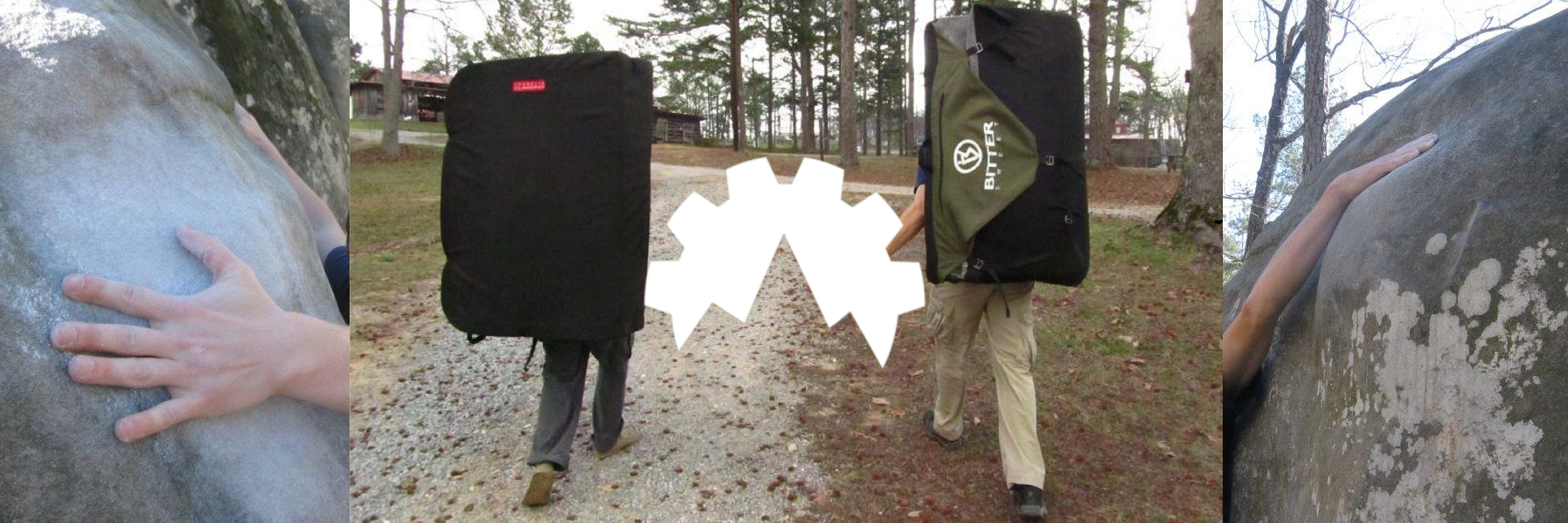benchmark – noun – bench·mark | \ ˈbench-ˌmärk
(Entry 1 of 2)
1a: something that serves as a standard by which others may be measured or judged
b: a point of reference from which measurements may be made
c: a standardized problem or test that serves as a basis for evaluation or comparison (as of computer system performance)
What is the point of a benchmark climb? What makes a good benchmark? Why are they so important? Let’s take a look.
Why do we have benchmarks in climbing? Simply put, grades are subjective, which we’ve talked about at length here. We can’t physically set our latest send on the hanging scales and load up the other side with NIST-approved weights until it hangs level (ed: neeeeerd!).
So instead, we mentally hold all previous sends we have in one hand, and our new unknown in the other, until we find a “known” of equal magnitude. We may end up in a situation where we’re judging a “V5” based on some slab Cheryl called V5, because she climbed Bill’s diherdral V5 FA, and he based that off a video he saw of a roof in Hueco.
Enter The Benchmark: a climb that all, any gender, technician and burlster, short and tall, crimp-master and sloper slapper, all agree is V5. If you’ve done it, you’re definitely worthy to call yourself a V5-Climber (article for another time), and have a solid 1-degree-of-seperation to assess future sends against the grade.

Thing is, we need more than one benchmark for the grades us regulars climb. Sure, having a solitary shining icon like “Dreamtime” for all the early-00s elites to jet-set and try is fine. If there were only one benchmark V3 globally though, I’d still be waiting my turn in line a decade after learning what it was. We need regional, or even local, benchmarks to set the tone for the others in it’s sphere of influence.
So, what makes a “good” benchmark? I’d argue a few things:
- Difficulty – It should be at the low end of the scale for that grade, if not the bottom – a controversial opinion, but hear me out. If we’re using it as a basis for comparison, I usually use benchmarks as the ‘lower limits’. “Is this harder than Nobody Here Gets Out Alive?” – if ‘No’, its less than V2, if ‘Yes’, its at least V2. Rinse and repeat until you’ve got the boulder in question bounded by two benchmarks, and there’s a good guess at the grade.
- Style – I would argue a good benchmark shouldn’t necessarily push the difficulty in a single style, and shouldn’t be one-move-wonders. So no V7 benchmarks that revolve around a single V7 microcrimp-pull through amongst otherwise juggy holds. A caveat to this – the local benchmarks should be representative of the average style of the area: no sense in crowning a techy slab the standard-bearer at a crag that’s 80% overhanging compression lines.
- Morphology – Benchmarks are such because they’re something the community has decided to agree on, which is why I note above that you shouldn’t have to be a crimp\pinch\dyno specialist to make the grade. Likewise, the grade shouldn’t depend on the build of the climber – no scrunchy sit-starts, or Kai Lightner only spans.
- Robustness (Future-Proof) – The only constant is change. Some lucky benchmarks are just as hard today as they were on inception. Others have broken, or been over-loved into a state of polish. Sometimes new beta is found. The other problem is evolving technology – big swatches of toehooking rubber are a modern invention, those and kneebar pads can really change the mood of problems that can exploit them, tumbling the grade.
- Quality – Frankly, it ought to be cool. It ought to be iconic. There might be a little chicken and egg action here – do the climbs we flock to eventually become the gold standards, or do we naturally flock towards those whose reputation and grade has been cemented?
That last bullet is the springboard to our final thought – why are they so dang important. As stated above, they set the tone and understanding for our arbitrary numbering system. Benchmarks aren’t just the routes we test other routes against – they’re the routes we test ourselves against. If you climb Midnight Lightning, you’re a V8 climber, no questions. Each benchmark also grants you membership into a special social group – those capable of name dropping the good, rare, stuff that we all agree on; “Yea, Jeremy says his new rig is V3, but its no Bumboy, hell, its barely a Heretic.”
Do you agree? Let us know your favorite benchmarks in the comments below.
Justin Meserve climbed at the origin of the V-Grade, Hueco Tanks, for five whole days, has sent over 1000 different boulders, and refuses to assign anything a grade tighter than a 4-point range. Much like “Whose Line is it Anyway”, everything is made up, and the points don’t matter.

